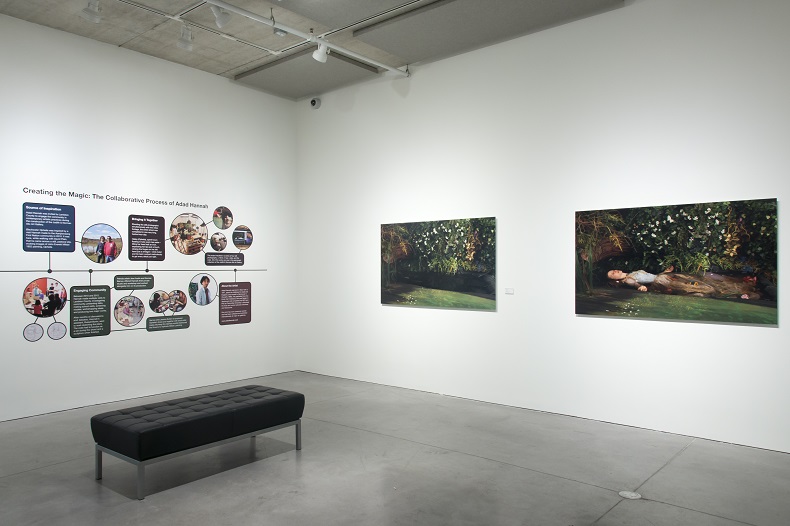Adad Hannah: Blackwater Ophelia

May 1 - August 3, 2015
"A woman who exists but for one night, no, but for a single dream, leaves us with the most tender regrets. She leaves us, trembling like a tree that passed the night inundated with moonlight, with a light gratitude."
– Jules Renard
The Lure of Ophelia
Ophelia is one of the most frequently illustrated of Shakespeare's heroines and one of the least discussed in Shakespearean critical texts. It is the mythology of Ophelia that has captured and sustained the interest of artists, poets, psychoanalysts, film makers, fashion designers, writers, feminists, photographers, educators, and musicians for over 400 years.
Blackwater Ophelia is inspired by the 1852 painting by John Everett Millais, as Hannah remarks:
I have liked this painting for a long time; it is so lush and obviously melancholic. It also depicts nature, but nature as seen in the middle of the nineteenth century, a nature laying itself out for the photographic—which is really a nature constructed by and for photography. To restate this scene for photography, in a painstaking manner using silk flowers and a built set draws attention to the artifice of photographic images, while still seducing with the same techniques Millais used 150 years ago. This double reading/double presence is interesting for me, and hopefully for viewers as well.
Ophelia is most often presented in terms of symbolic meanings of her behaviours, her wild and tangled hair, her gestures, her costume, and her flowers. Throughout the play, Shakespeare uses the symbolism of flowers to represent Ophelia's voice, a way to express her unspoken thoughts. Having been rejected by Hamlet, Ophelia's last breath is about to escape through her lips as her entire being gives in to heartbreak. Her physical body is held for a saturated and poignant moment by the buoyancy of the still water. Her long, sinewy hair floats just below the surface of the water mirroring the tangled willow branches above her head, as she slowly descends into the dark comfort of the water. Her voice will soon be silenced.
This archetypal scene takes place off stage, igniting the imagination of the masses and lending itself to centuries of rich and multi-layered visual and poetic interpretations. There continues to be extensive discussion around the symbolic and psychoanalytical connotations of Ophelia, including everything from female oppression, insanity and suicide, to the feminine absence of thought, sexuality, and language. But it is the archetypal portrayal of heartbreak and sorrow within the lush backdrop of nature that captures the imagination of so many.
Image credit: Adad Hannah, Blackwater Ophelia(2012) chromogenic photographic print, 99 cm x 163.8 cm, JNAAG: Purchased 2013
